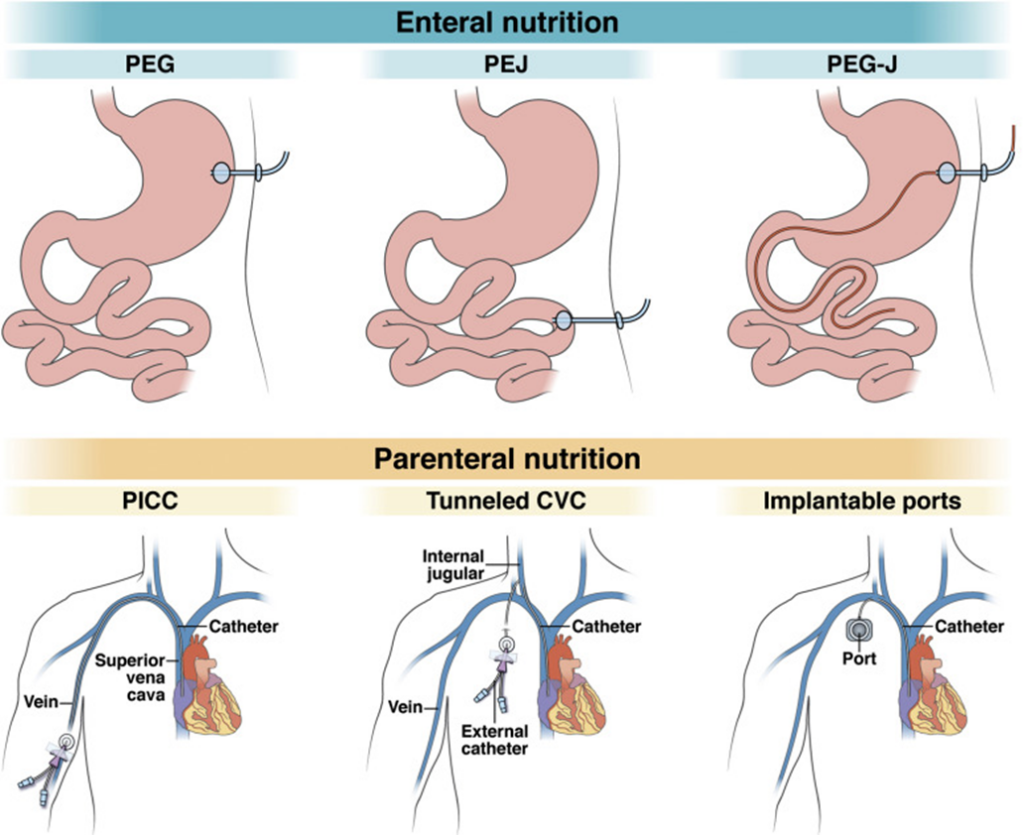
When patients have problems with eating or digestion it is sometimes necessary to provide nutrition with artificial food, which is specially formulated to provide the right balance of fats, proteins, sugars, vitamins and minerals. These artificial preparations can be delivered into the gut to be absorbed in the usual way, which is known as Enteral Nutrition. Alternatively, they may be delivered into the blood stream through a drip to bypass the gut, which is known as Parenteral Nutrition.
Enteral Nutrition
If the gut is working normally to absorb food and nutrients, then Enteral Nutrition is the preferred way of delivering nutritional support. In some patients, Enteral Nutrition may have to be delivered into the gut through a tube, but in others it may be possible for them to take this by mouth.
Enteral Nutrition by mouth
This form of Nutritional support is used for patients who are unable to eat enough food, either because they have a poor appetite, eating is difficult or because their body requires additional energy because of illness. Nutritional products can be eaten or drunk in addition to any food or drink that the patients may be able to manage. These products provide more energy and nutrition than normal food, so patients don’t have to consume a large amount.
Enteral Nutrition through a tube
Enteral Nutrition delivered into the gut by a tube is used where nutrition cannot be taken normally by mouth, but the gut is otherwise working. Common reasons for the use of this type of nutrition include;
- Strokes or other neurological conditions which impair swallowing
- After some types of operations on the face, neck, throat, gullet or stomach
- Blockages of the gullet or stomach
- After radiotherapy to the throat or gullet
In the first instance, feeding tubes are usually placed through the nostril to pass down the gullet to lie in the stomach or small bowel. Liquid nutrition is then slowly pumped down the tube. If it is likely that the patient’s ability to eat will not recover quickly or may not recover at all, then a feeding tube can be placed through the abdominal wall, directly into the stomach (gastrostomy).
Parenteral Nutrition
If the patients gut cannot be used to absorb nutrients, then nutrition must be delivered into the patient’s blood stream, bypassing the gut. Reasons for this type of feeding include;
- Blockage of the gut (obstruction) or the gut failing to work (ileus)
- Perforations of the gut where feeding will result in worsening infections
- Where a large part of the gut has been removed and the patient cannot absorb enough food (short bowel syndrome)
- Where parts of the bowel are diseased and not able to absorb properly (functional short bowel)
Parenteral Nutrition is slowly pumped into the blood stream via a drip. this is because it can cause irritated blood vessels, it is normally given into a large vein near the heart though a central venous line placed into the upper arm, chest or neck. Using parenteral nutrition can sometimes result in serious problems such as blood infections or an upset in biochemistry. Therefore, patients need intensive monitoring. If the problem with gut function is permanent or likely to persist for a long time some patients may be taught how to manage their own Parenteral Nutrition at home (Home Parenteral Nutrition).
Total Parenteral Nutrition (TPN) is a method of feeding that bypasses the gastrointestinal tract. Fluids are given into a vein to provide most of the nutrients the body needs. The method is used when a person cannot or should not receive feedings or fluids by mouth.
Parenteral Nutrition (PN) is the medical term for receiving nutrients intravenously (by IV, meaning by a needle in your vein). There are two types of Parenteral Nutrition: Total Parenteral Nutrition (TPN) and Partial Parenteral Nutrition (PPN)
Enteral Nutrition is administered through a feeding tube placed into the stomach or intestines. Enteral Nutrition is administered through a traditional intravenous (IV) line or via a central IV surgically placed during an outpatient procedure.







